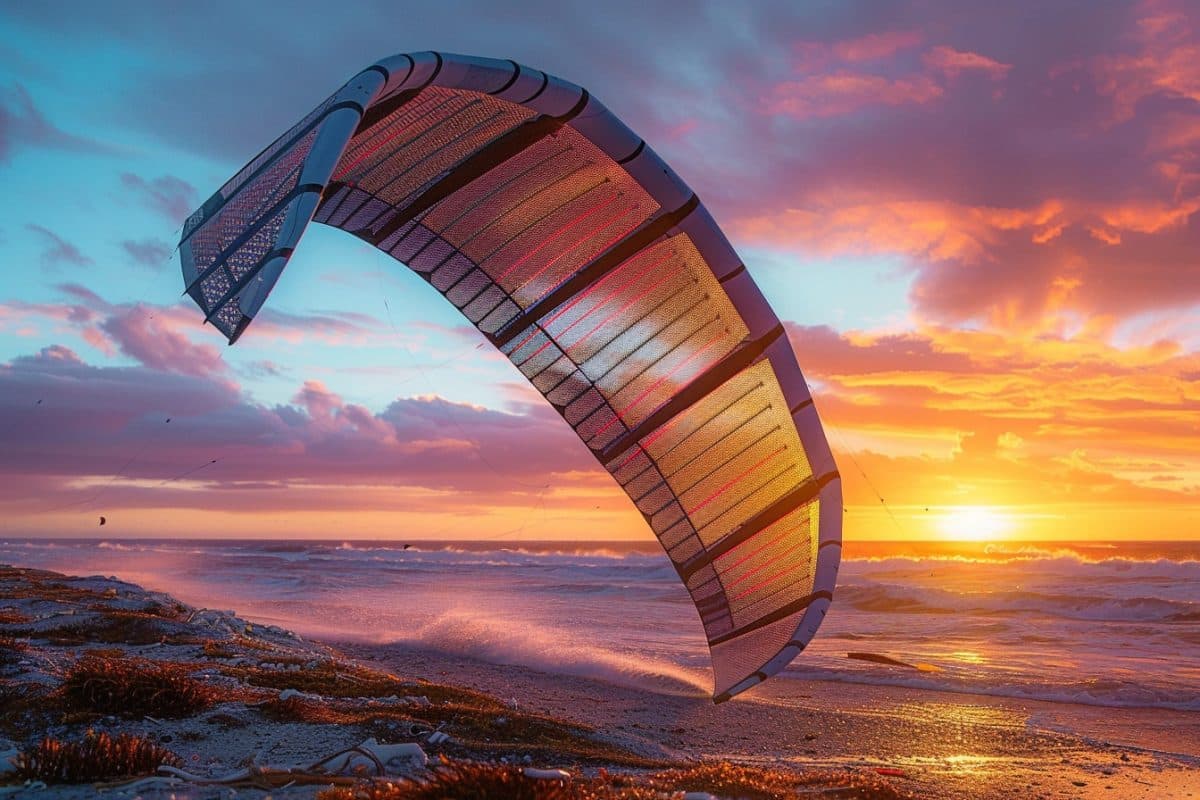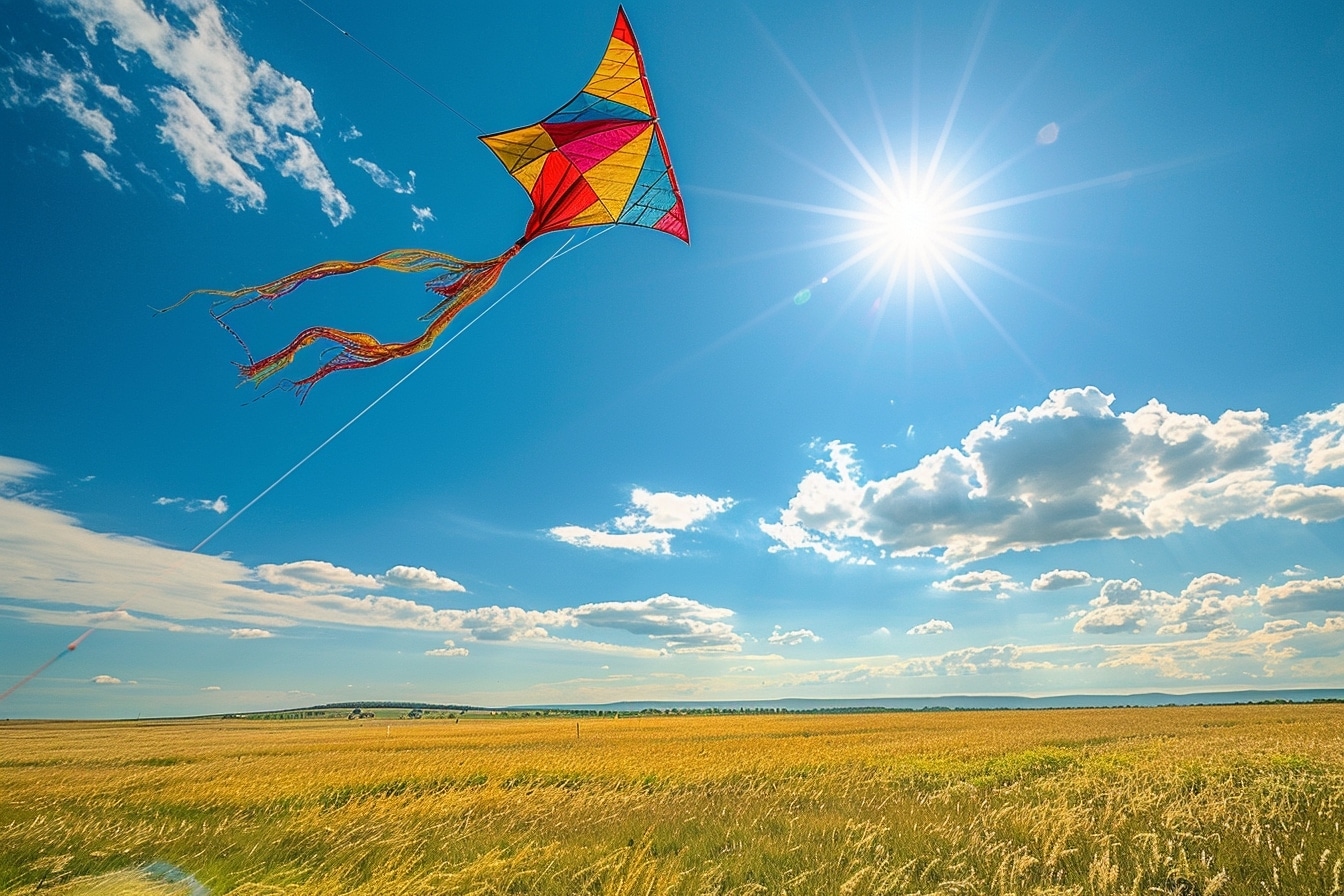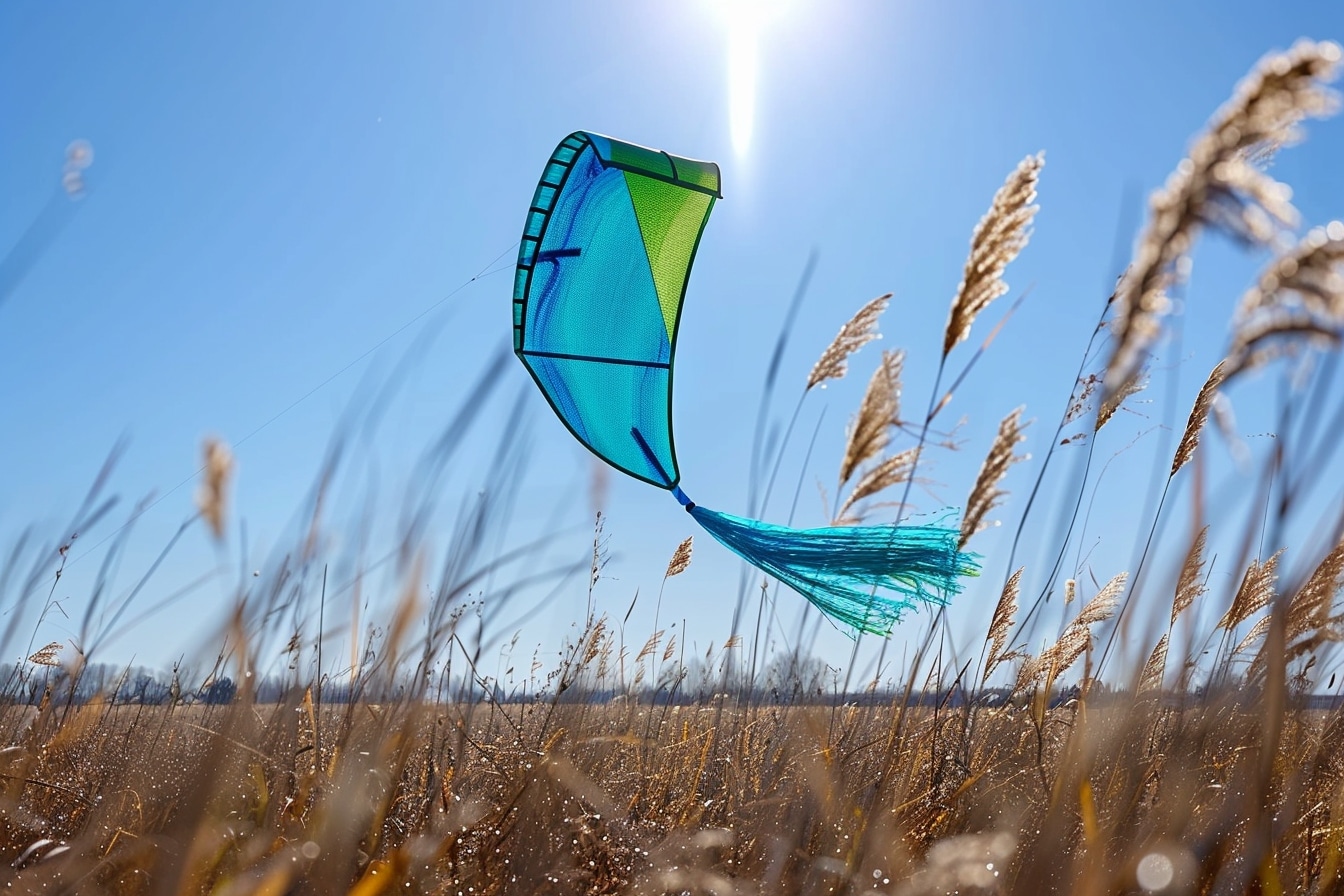Sky-High Success: Selecting the Ideal Materials for a High-Performance Kite

Discover the secrets to choosing the ideal materials and creating a high-performance kite! 🪁✨
Choosing the right materials for your kite

Kite enthusiasts know that the choice of materials is crucial to the performance and durability of their craft. Whether you’re a kite-making novice or expert, it’s essential to carefully select the right components for your project to achieve optimum results.
The sail: light and strong
The sail is the essential component of a kite, the one that gives it its shape and enables it to soar through the air. For a high-performance kite, it’s best to opt for materials that are both light and strong. Polyester and nylon are often used for their durability and ability to maintain the kite’s shape even in strong winds.
Reinforcements: strength and flexibility
Reinforcements are the bars or rods that hold the shape of the kite and enable it to fly properly. For effective reinforcement, we recommend materials that combine strength and flexibility. Carbon and fiberglass are popular choices because of their light weight and resistance to aerodynamic stress.
Lines: lightness and tensile strength
The lines are the elements that connect the kite to the pilot and enable it to be maneuvered in the air. For high-performance lines, we recommend choosing materials that offer both lightness and tensile strength. Dyneema and Kevlar are popular options for their strength and low elasticity, enabling precise control of the kite.
Accessories: quality and durability
In addition to the main components, accessories such as handles and attachments are also important for an optimal flying experience. Make sure you select accessories of the highest quality and durability to guarantee safety and comfort when handling your kite. In conclusion, the choice of materials for making a kite is a crucial aspect that directly impacts its flying performance. By opting for quality components, adapted to your needs and level of experience, you’ll be able to enjoy this fun and exciting activity to the full, while guaranteeing the longevity of your kite.
Lightweight fabrics for enhanced performance
Kites, symbols of freedom and escape, are also captivating aerial machines that require a careful choice of materials to optimize their performance. Among these materials, the fabrics used to make the sails play an essential role in the kite’s lightness and maneuverability. Let’s find out how lightweight fabrics can significantly improve the performance of this enjoyable form of entertainment.
Lightness and handling: the keys to performance
For a kite to take flight with agility and responsiveness, the lightness of its components is crucial. In fact, lightweight fabrics offer a better ability to capture and effectively use air currents, enabling fluid, rapid movement through the sky. Choosing lightweight fabrics therefore enhances the kite’s maneuverability and makes it easier to fly, offering a more enjoyable and high-performance flying experience.
Innovative materials for exceptional kites
Thanks to technological advances, today’s kite manufacturers have access to a variety of light, resistant fabrics, specially designed to meet the demands of kite flying. Nylon, polyester or mylar fabrics are among the most popular options for their ideal combination of lightness and durability. Choosing the right material can make all the difference in terms of aerial performance, enabling you to reach higher altitudes and perform impressive acrobatic tricks.
Tips for choosing the right kite fabric
For performance-minded kite enthusiasts, it’s essential to consider a few criteria when choosing fabrics for their kites. Here are a few tips to help you select the fabrics best suited to your needs: – Opt for lightweight, yet resistant fabrics for better responsiveness in flight. – Favor UV-treated materials for better longevity and preserved colors. – Choose water-repellent fabrics for practice in all weathers and varied conditions.
By following these recommendations, you’ll be able to boost your kite’s performance and get the most out of your flying sessions, whether you’re flying acrobatic models or traction kites. In conclusion, lightweight fabrics are undeniably valuable allies for getting the most out of your kite and enjoying unforgettable aerial experiences. By opting for quality materials adapted to your flying style, you can push back the limits of performance and discover new sensations in the bewitching world of kites.
Carbon fiber: the key to a strong, easy-to-handle kite
Kites are fabulous objects that take us all back to childhood, but building them is an art that requires quality materials. Among these, carbon fibers stand out for their exceptional properties, making them the key to a kite that’s both strong and easy to handle.
Increased strength thanks to carbon fibers
Carbon fibers are renowned for their incredible strength and lightness. Integrated into the structure of a kite, they enhance its strength and durability in the face of strong winds and the stresses of aerobatics. Thanks to their exceptional strength, carbon fibers provide a solid structure that prevents kite deformation and ensures long kite life.
Optimum handling for enhanced performance
In addition to their strength, carbon fibers contribute to the kite’s maneuverability. Their light weight makes the kite more responsive to line movements, offering enhanced maneuverability. Kites built with carbon fibers are easier to fly, enabling the practitioner to execute complex tricks with precision and fluidity.
A wise choice for kite enthusiasts
For kite enthusiasts in search of unique performance and sensations, using carbon fiber in the construction of their kite is a wise choice. Whether you’re competing in acrobatic competitions or simply enjoying a sunny day, opting for carbon fibers guarantees a kite that’s robust, easy to handle and high-performance. In conclusion, carbon fibers are truly the key to a strong, easy-to-handle kite. Their combination of strength and lightness makes them the material of choice for all kite enthusiasts looking for an exceptional flying experience. Don’t hesitate to invest in a carbon fiber kite to discover the full potential of this innovative material in the fascinating world of recreational aeronautics.
The advantages of Kevlar for a robust, durable kite
Increased strength and solidity
Kevlar is a composite material renowned for its strength and resistance to mechanical stress. When used in the construction of a kite, Kevlar lends unparalleled strength to the entire structure. Whether it’s to cope with strong winds or to withstand shocks in the event of a fall, Kevlar ensures exceptional kite durability.
Lightness and performance
As well as being extremely strong, Kevlar is also a lightweight material. This characteristic allows the kite to be designed to be lightweight, while guaranteeing optimum strength. As a result, kites equipped with Kevlar benefit from improved maneuverability and can achieve superior aerodynamic performance.
Weather and wear resistance
Kites are often exposed to changing weather conditions and repeated friction. Thanks to its unique molecular structure, Kevlar offers excellent resistance to weather, moisture and UV rays. What’s more, its ability to absorb shocks without deforming makes it an ally of choice for preserving kite integrity against the wear and tear of time.
Longevity and reliability
Investing in a kevlar-equipped kite guarantees long life and rock-solid reliability. By opting for this high-tech material, kite enthusiasts can be sure of enjoying their equipment over the long term, without fear of premature deterioration due to extreme conditions or intensive use. In conclusion, choosing Kevlar for the manufacture of a kite is a guarantee of quality and performance. Its unique combination of strength, lightness, resistance and longevity makes it an essential material for any kite enthusiast in search of excellence.
Nylon, a versatile material for all flying conditions

See this post on Instagram
When building a kite, the choice of materials is crucial to ensure its performance and durability. Among the most versatile and effective materials for all flying conditions, nylon stands out for its unique properties.
Nylon’s resistance to different weather conditions
Nylon is renowned for its resistance to the elements. Whether faced with strong winds, sudden showers or scorching sunshine, nylon retains its structural properties. This ability to maintain its strength and elasticity makes it an ideal choice for kites flying in variable conditions.
Nylon’s lightness and maneuverability
Another important advantage of nylon is its lightness. As an aerodynamic material, nylon allows the kite to interact easily with the wind, ensuring good stability in flight. What’s more, its maneuverability facilitates the construction of kites in a variety of shapes, offering a wide range of possible designs.
The durability and longevity of nylon
Thanks to its robustness, nylon is a durable material that does not degrade easily. Nylon kites can withstand the wear and tear of constant friction with the air, and the mechanical stress of acrobatic maneuvers. In conclusion, nylon is an essential choice for kite builders looking for versatility, strength and durability. When you choose this quality material, you can be sure of taking full advantage of all flying conditions, from sunny days to fickle winds. Choose nylon for high-performance kites ready to take on any challenge in the sky!
Comments
Leave a comment